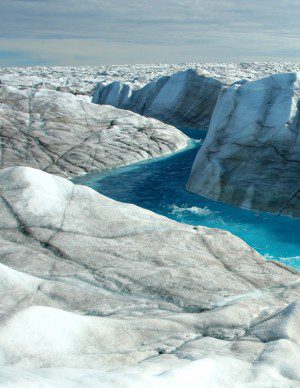
An image shows Leverett Glacier in west Greenland, which is about 50 kilometers from the ice sheet margin. New findings show a clear regional slowdown in the flow of land-terminating ice when surface meltwater rises. (Credit: Andrew Sole“University of Sheffield)
The Greenland ice sheet's flow toward the ocean is controlled by several factors, but how surface meltwater drains through the three-kilometer-thick sheet to the ground below and the effect this has on the speed of ice flow is poorly understood.
To reverse that lack of knowledge, scientists from the University of Edinburgh, the Université Savoie Mont-Blanc and the University of Sheffield studied 30 years of Landsat data to see if increased surface meltwater increased the flow of ice to the ocean by lubricating the bed at the base of the ice, or if increased meltwater decreased the flow by modifying the bed. According to their results, surface melt slows the ice flow when it terminates on land.
The melting actually reduces the lubrication at the ice sheet base during the following winter, causing winter ice flow to be slower after a warmer summer, noted Andrew Tedstone from the University of Edinburgh.
Noel Gourmelen from the University of Edinburgh added, We would not have been able to do this research without the free and open access to Landsat data provided by ESA.
Click here to read the full report published in Nature.

